This is a sponsored post written by us for The Home Depot.
Two days ago we showed you the beautiful new containers we got for gardening this year.
And now we’ve got to get them planted.
Because if you know anything about gardening, we just don’t want to waste any daylight! Abby’s using her pots to add color and character to her already gorgeous greenhouse (that’s Jeanne gushing … not Abby … Abby doesn’t gush about her own stuff. She’s just not that gal). So she’s transplanting a lemon tree in one. A LEMON TREE! IN MONTANA!!! No, she’s not crazy. That greenhouse of hers is one toasty little building and gives her a climate that’s basically two zones warmer than ours.
So yesterday, that beautiful little lemon seedling got it’s new home …
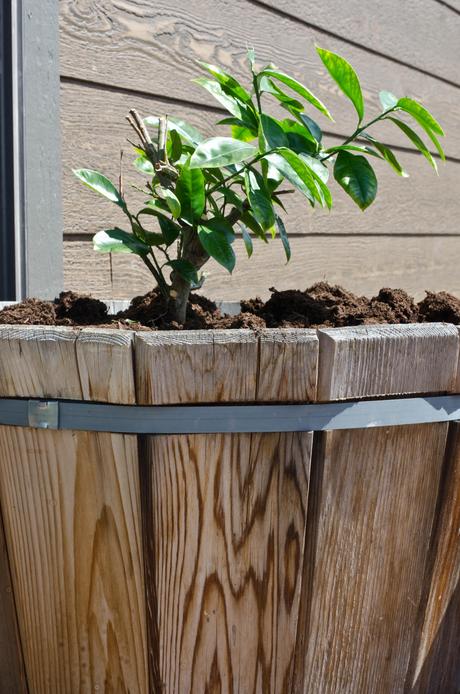
And she’s got tomatoes going into another one.
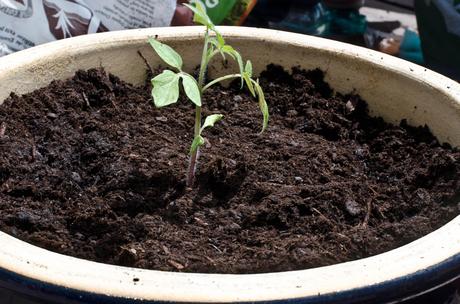
Ohh, and a few basil starts in a terra cotta pot purchased at the Garden Center last year. This will live in the kitchen for bit longer till it’s warm enough for the deck.
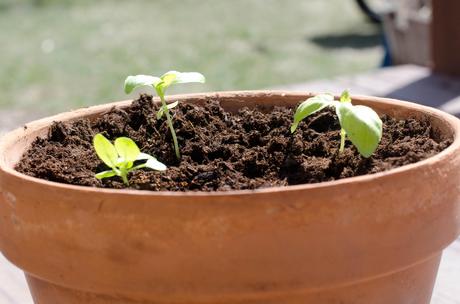
Jeanne’s a little less organized. She’s got lettuce going into one. Chives in another. But there’s not a whole lot to show for it yet since they are just seeds in soil.
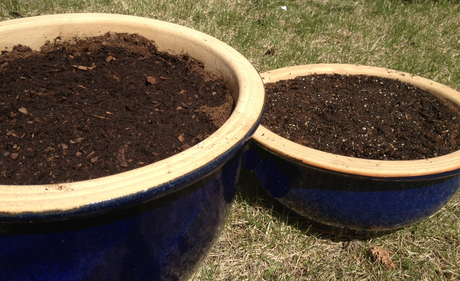
If you need a little more inspiration, be sure to check out THIS Pinterest page. Also this week, Jeanne’s working on her raised beds.
A few weeks ago, her stepdad was visiting and every other minute day he would say “you better get those peas in the ground.” (It was almost annoying … but, like Jeanne, her stepdad grew up in a rural agricultural part of New Jersey where if you want sweet peas, you have to get them in the ground the first week in April.)
Now, a few weeks later, even here in the Big Sky State, it is time to get the peas into the raised beds. So this week, Jeanne’s planting peas.
And broccoli.
Cauliflower.
Kale.
And spinach.
But it’s not without some trepidation. Because in Montana, we still have night temperatures dropping below 20 degrees Fahrenheit. So protecting the seeds somehow is important. For Jeanne, that means planting seeds and protecting them with some spun row cover.
In fact, if you’re not planting in raised beds (or in a greenhouse or cold-frame), you might not be able to plant yet. You’ve got to be able to work the soil with relative ease (aka, it’s not frozen anymore) if you want your seeds to germinate. And it’s really only time to plant cold-season veggies if you live as far north as we do.
But if you’re in a more temperate environment … get those seeds in the ground! Especially if you’re like us, and looking to guarantee that your food is organic, locally grown, really good for you, and a totally satisfying experience.
If you do have a greenhouse … it’s time to start transplanting some seedlings. Abby’s moving tomatoes.
And beets.
And peppers.
Onions.
Melons.
She’s even planting sweet potatoes this year.
It’s amazing what you can plant when you create the right environment. And Jeanne’s only a little envious.
So let’s talk transplanting …
We both use a lot of peet pots (aka eco-friendly fiber pots) for our seedlings.
When it’s time to transplant (into bigger pots or into the raised beds or garden or greenhouse), we’ve heard that you can plant the whole peet pot directly into the ground so long as it’s fully covered by soil. Now, this may just be our experience, but we have both found that if you leave the peet pots on, they do not breakdown all the way and can limit your root growth, which limits the size and viability of your plants.
But we still use the fiber pots. Why? Because they are SUPER EASY to use in transplanting. All you need to do is make sure they are well-watered and then peel them off from around the plant before putting your root ball into the ground.
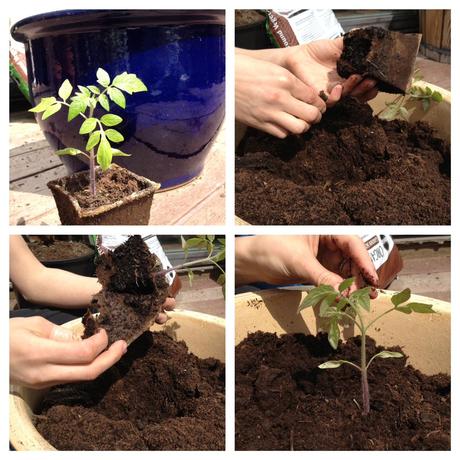
See how easy that is? And a major benefit of doing it this way is that you won’t disturb your root system as you might having to dig the ball out of a plastic container (although we’d be lying if we told you we didn’t use these, too … we use what’s available because our goal is to grow the most plants we can before they have to get moved outdoors).
After your seedlings been successfully moved into your new container (or raised bed or garden or greenhouse or cold frame), it’s a good thing to add a little more soil or compost or your favorite fertilizer (when Jeanne transfers her tomatoes, she adds a bit of bonemeal to to the soil mixture to increase the nitrogen for juicy red tomatoes).
Then water. Water. Water. Make sure your new transplant is well-hydrated. If you’ve just put it in a new pot, be sure to harden it off before leaving your little munchkin outside all the time. That sweet little girl needs time to get used to the harshness of nature after being all cozy next to the heater in your sun-room

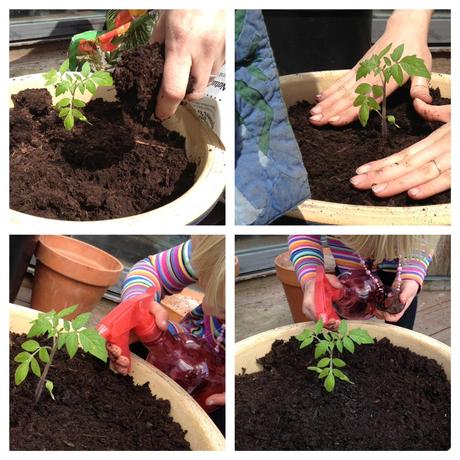
Well … if you’re Jeanne and Abby … you start dreaming of the Raw Garden Salsa you’re going to make come mid-summer.

Or the pesto pizza that’s just around the corner.
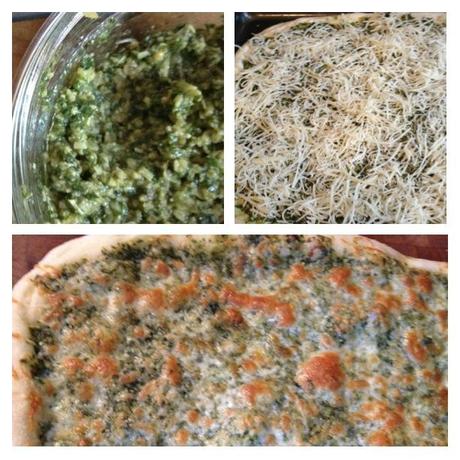
Maybe you’re even thinking about attempting a watermelon & heirloom tomato sorbet … just for the heck of it.
Anyway, that’s what you do if you’re us …
What’s going in your garden this year??
It’s home improvement time, and The Home Depot has everything you need to #DigIn for Spring. No matter what projects you want to tackle, they have great values on all you need. They’re ready to help you with renovation ideas and expert advice, too.
Get over $300 in email exclusive savings each year, sneak peeks on new products, monthly lawn & garden ideas for your region and access to The Home Depot’s gardening experts.
Click HERE to join the world’s largest garden community today! Or go to http://gardenclub.homedepot.com/ to see some of the many benefits of membership.
This is a sponsored post written by us on behalf of The Home Depot.
